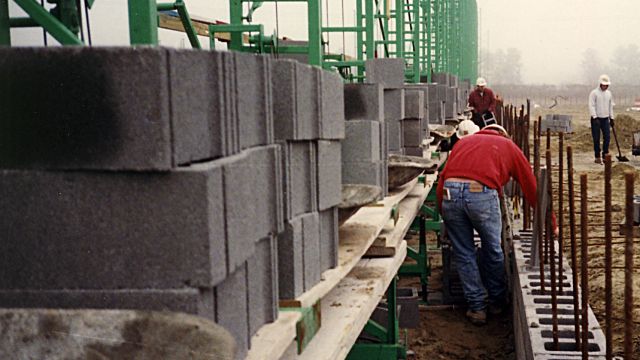Scaffolding production enhancers
Jobsite techniques and equipment that can help boost your bottom line
I talk to a lot of masonry contractors daily. The great majority of them have a lot of work on the books right now. We seem to be coming out of this horrible downturn. If your area isn’t quite there yet, take heart; good times are coming.
All the men I talk with are looking for ways to be more productive. Bricklayers are in short supply, and general contractors want the jobs done faster. Of course, elevating scaffolding is a great way to get more units in the wall with fewer men, but this article includes other techniques contractors around the country are using. The new rules defining low-lift grouting are a huge labor saver.
Elevating scaffolding
When I was in the masonry business with my dad back in the ‘70s and early-‘80s, he drilled “The Law” into my head: “When the block stops, the money stops.” Nothing else matters.His production push started back in 1969, when he used jack-up scaffolding instead of frames on one job. The men laid 30 percent more units per day on that job. Then he said something I’ll never forget, “Every time we increase production by 15 percent, we duplicate our profit.”
On that job, he tripled his projected profit. Stop and let that sink in. The labor number in your bid is five, six or seven times bigger than your profit number. On the average job, 15 percent of the labor number is equal to the profit number. Increase production by only 15 percent, and you double your profit. Increase it by 30 percent, and you triple your profit. So, not only will you have a happy general contractor and owner when you do the job 30 percent faster than with frames, you’ll re-capture a lot of unspent payroll money and put it back in your pocket.
The nuts and bolts of how it works are just common sense really. Your men don’t have to lay units faster; they just keep on working at a comfortable height, instead of stopping for 20 minutes several times a day to hop planks. Most important, they are always laying in their “sweet spot,” which is waist high. They actually lay 20 percent to 40 percent more units in a day and are less tired.
It broke my dad’s heart, though, that his men hated the scaffolding; it was too wobbly and unstable. In order to keep doubling and tripling his profit, he teamed up with an engineer buddy and created his own scaffold system. That’s how Non-Stop was born.
Another advantage we built into our scaffolding is the ability to move the scaffold in place and work off it before the wall is ever started (see Photo 1). That saves moving the crew when the wall gets scaffold high. You pull out the masons’ outriggers and keep working. That feature re-captures at least 20 minutes of production time on every wall.
Is it time to buy equipment?
When work is on the upswing, and you have enough work ahead to make your equipment dollar out, that’s the time to buy. For instance, the rule of thumb for crank-up scaffolding is that every 100 feet saves you two bricklayers. That means seven bricklayers on elevating scaffolding will lay the same amount or more units as nine masons on frames.Now, the national average cost for a bricklayer is $43,200 per year – a lot more in some places, less in others (check your cost, it might surprise you). Two bricklayers cost you $86,400 per year, and 100 feet of crank-up scaffolding runs about $33,000. If you have four or five months of work ahead, buy it. It will pay for itself in that short time.
Cut down on scaffold planks
With scaffold planks costing as much as $38 each in some areas, using less of them represents a significant savings. Using elevating scaffolding means you only plank one level, and you only need one-fourth as many boards. On a typical job where you might need 600 boards on frames, you’ll only use 150 with crank-up scaffolding.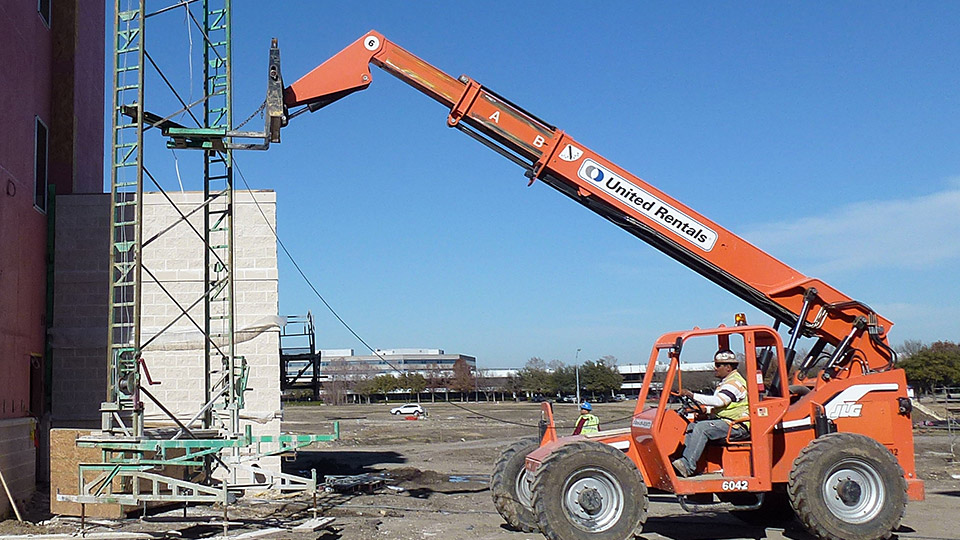
Scaffold erection and dismantle costs
Ever since they were invented in the ’40s, tearing down your frames in between walls has always been an expensive and time-consuming process. Nobody cared back then, because frames were such a huge improvement over the wood scaffolding of the day.Nowadays, if you’re using elevating crank-up scaffolding, and even some mast climbers, you simply pick your towers with a forklift and move them to the next wall in about 10 minutes (see Photo 2). That’s a five time reduction in labor cost, if you’re spending $1,000 to move your frames, you can move your towers for about $200. And that’s every wall. Plus, using an elevating system, you set up your scaffold once at the beginning of the job, and tear it down once, at the end of the job.
Low-lift grouting is now 12 feet, eight inches
Do you really enjoy laying six courses and then wasting 20 minutes (minimum!) moving your men somewhere else, several times a day? Pouring grout in four-foot lifts is a horrible production killer.Well, several years back, the code was changed. The Building Code Requirements for
Masonry Structures, Specification for Masonry Structures TMS 602 now defines low-lift grouting as 12 feet, eight inches. Many larger contractors around the country are taking advantage of the change and reaping big savings.
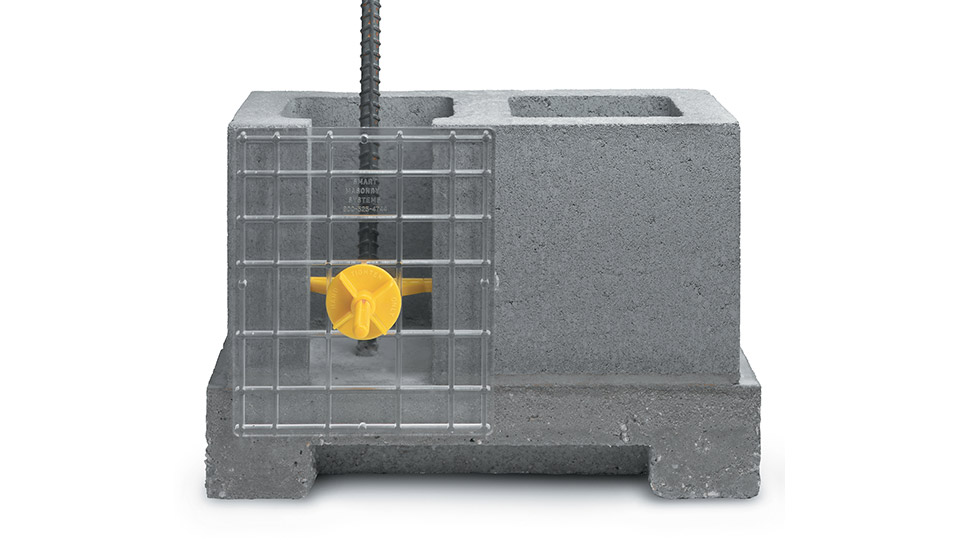
- No intermediate bond beams
- Ten- to 11-inch slump
- Wall must be at least 4 hours old
- It’s a lot more productive to keep your crew in one place and lay 19 courses of block,
instead of six - You thread in one piece of rebar, instead of multiple pieces
- No more reaching over rebar
- You pour one time, instead of three
- You wait for the inspector once, instead of three times.
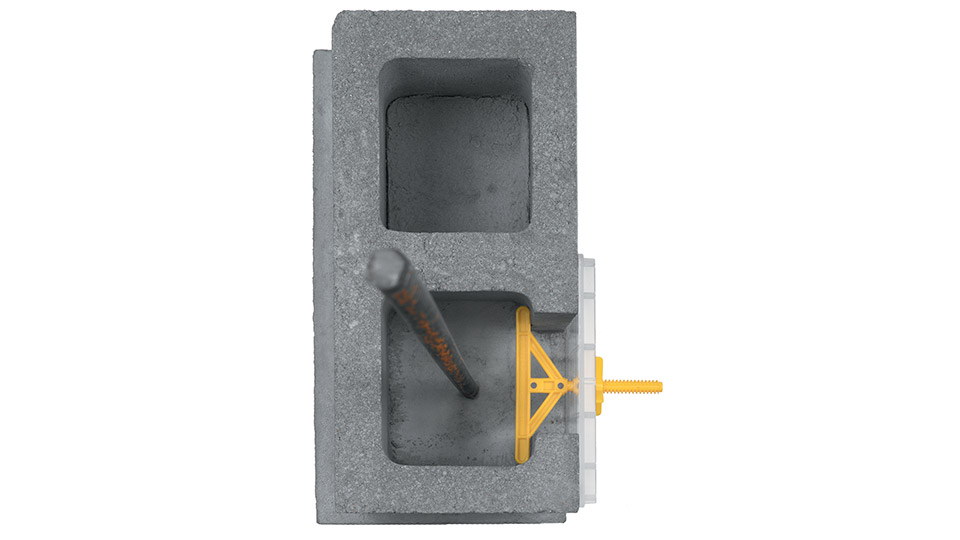
Other time savers
Many new elevating scaffold users told me they kept their crew the same size as before when they moved to the new system. One “difficulty” they ran into – although they were glad to have the problem – was that their masons used up materials at a faster rate than before, and sometimes the forklift had trouble keeping up.They solved the problem by having the lift driver stay over and stage pallets of block by the scaffold. Jimmy Alvey, a contractor in San Antonio, told me, “Sometimes all the blocks have to be unloaded way on the other side of the site. It’s amazing how much material a good forklift driver can stage around the job in an hour, when that’s all he has to do. He’s pulled in 90 different directions during the workday.”
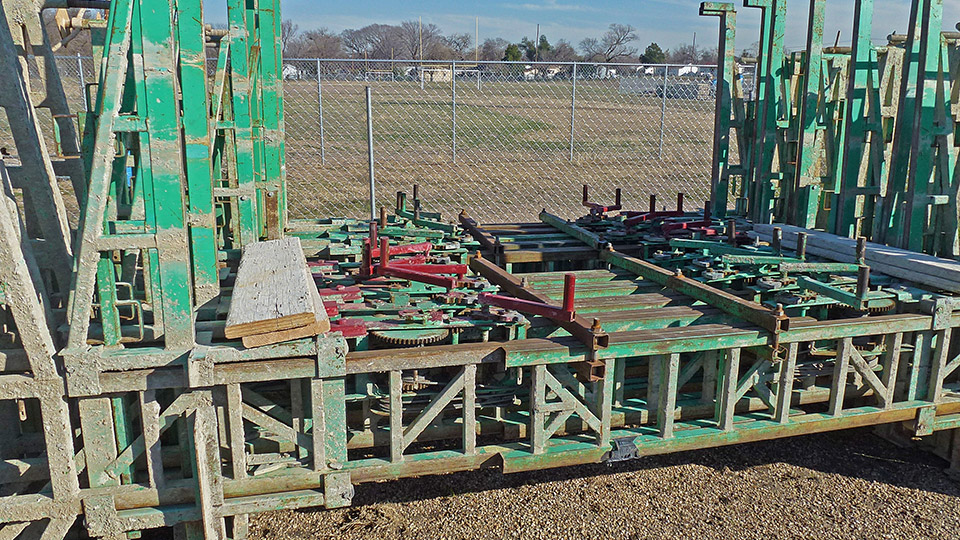
Keep your towers assembled between jobs
A feature that really sets crank-up scaffolding apart from frames is the ability to move them from job to job, fully assembled (see Photo 5). Jimmy Alvey said, “When the job’s finished, we lay them down and take the x-braces out. Then we clamp 18- or 27-foot-high towers together (see Photo 6) in bundles of 10. The bundles are only four feet wide, so we can put two across our trailer. We go to the next job, put the x-braces in, and stand them at the first wall, sometimes all before the sun goes down.”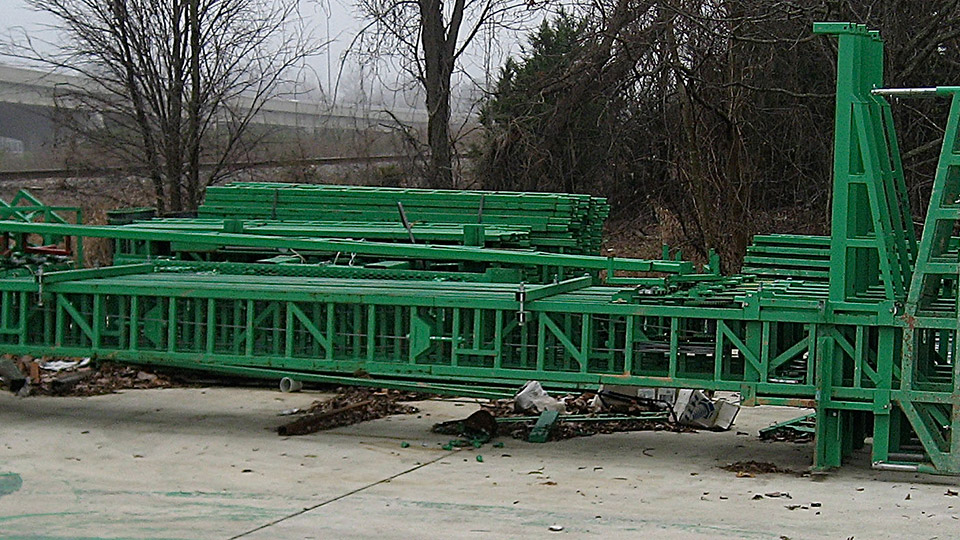
Originally published in Masonry magazine.
About the Author
Justin Breithaupt, Jr. is the owner of Non-Stop Scaffolding, Inc. He has been involved with elevating scaffolding and the masonry business since 1975, when his father invented a tower scaffolding system for their own masonry business. Visit www.nonstopscaffolding.com for more information on Non-Stop Scaffolding, Inc.
Many thanks to Rashod Johnson, P.E., for the information on the new grout codes. He is
president of The Roderick Group Inc., an engineering consulting firm, and Material Service Testing Laboratories Inc., a construction materials lab, both located in Chicago. Previously, he served as the MCAA’s Director of Engineering.









